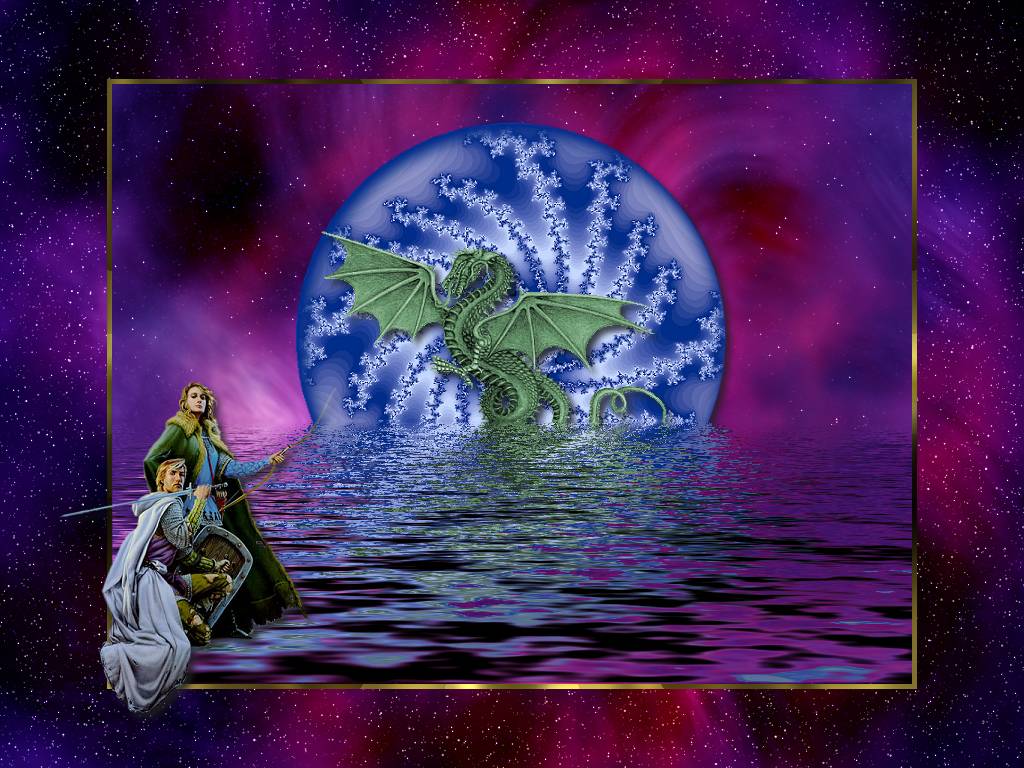|
The Qualities: Modality of the Signs and Houses Modality involves three qualities attributed to every sign and house, in rotating order. Each sign is either Cardinal, Fixed, or Mutable; each house is either Angular, Succedent, or Cadent. The qualities each hold their own quadruplicity of one sign per element. The qualities may be explained through the example of a wheel; Cardinal is the rim, Fixed is the hub, and Mutable is the spoke. Signs of the same quality are in Square aspects to each other; the houses have Square aspects as well. The Square represents a conflict of interests, sometimes constructive, sometimes destructive, but always stimulating action. As initiators, the Cardinal signs hold a respective solstice or equinox, being called either Solstitial or Equinoctal. These signs begin life's stories, projects, and so forth. They are a forward movement pushing along a focused path. But Cardinal energy is not complete without the subsequent modalities; fundamentally, they cannot finish alone what was started. Without Fixed energy, there can be instability, and without Mutable energy, one may not be able to so expertly find the path of least resistance. Fixed signs solidify and cohere what was begun, bringing depth and resolve to the table. They root in and bloom, fleshing things out with a concentrated focus. Fixed signs come in as their seasons are underway, representing the pursuit of realizations of what has begun. These are productive, immersive, sustainable signs, whose powerful gifts emerge when truly sinking deeper into an ongoing project. The "fixed fire" component to Leo is appropriate, given the steadiness of the Sun's fires and its apparent movement throughout the sky. Scorpio is connected to transformation, death, and rebirth. Yet it is a fixed sign— which most would not associate with endings. Aquarius is connected to disruption and change. How does the fixed quality come into play here? The Sun enters Scorpio as Autumn advances. It is a time of impending hiberation, but even as the land is chilled, the seeds within the earth promise eventual reawakening. This is the rebirth of the sign. The Mutable signs may be distinguished through their goals: Gemini searches to discover, Virgo seeks to complete physical perfection, Sagittarius aims to finish an ultimate truth, and Pisces looks for the end to infinity. These signs create the transitions between their surrounding signs by their investigations and dissolving so that new things may come to be. In Hellenistic astrology, these were not referred to as mutable, but bicorporeal, literally "double-bodied." This word is much simpler to understand: there are two twins in Gemini. Sagittarius is half-human, half-animal. Winged Virgo is not only half-human, half-angelic, but its constellation is the second largest in the zodiac; Manilius claims "the duality in her appearance (wings which are pictured on Farnese globe) is not the reason; for at the middle of the Virgin summer on one side ceases and autumn on the other begins." Along with the two Piscean fish swimming in opposite directions, these signs all suggest the multiplication of things and people. These are signs which serve as intersecting points. They neither are or aren't: at the moment that be, they follow the flow of each elemental mode (fire, earth, air and water). As related by Ptolemy, these four constellations are where the end and beginning of seasons meet, as if they have no definitive path but multiple choices compared the other signs. Bicorporeal people are indeed seen quite adaptable, distracted and flexible all at the same time.
The four most important houses are those directly above our heads (10th or Midheaven), under our feet (4th or Imum Coeli), on the left (1st or Ascendant), and on the right (7th or Descendant). These four are the Angular houses, marking the north, south, east, and west corners of the chart; the primary directions, or angles. A keyphrase for the character of these houses is: "to be," with the keywords "powerful" and "initiatory." When a planet is placed in an angle, it becomes dignified and very important. Succedent houses include the 2nd, 5th, 8th, and 11th. The keyphrase of "to use" may be attributed to these, along with "resultant status". Each of these houses are concerned with a state which we hope may remain stable or secure. This title comes from the Latin succedens; literally meaning the "succeeding" houses, as in "subsequent." The Cadent houses are the 3rd, 6th, 9th, and 12th. The character here is best understood in the words "learn" and "transform." Cadent houses are areas of dispersal, indicating widely spread activities. The meanings of the Cadent houses are not as concise; and really, today, neither is the idea of strength. In times past, when society was more imminently concerned with material survival, the strength of Cadent houses was not at all understood. Little material value could be assigned, and planets in cadent houses were hence considered weak. For instance, the Greeks called these houses ἀπόκλιμα (apoklima), literally meaning a declining or falling away. William Lilly, Christian 17th century astrologer, labelled these houses "poor and of little efficacy." NOTE: It should be remembered that each house is as strong as every other in it's own right. However, planets placed on or close to the angles do appear to express more strongly in the character of the person. This is especially true of the Ascendant and the Midheaven, irrespective of which house either side the planet may be. This is so simply because the positions in the chart represent points of rising and culmination respectively. It is advisable early on in your studies of astrology, that you begin to think of the houses as operating in pairs or axes through the concept of polarity— and NOT as singular chart factors. In this way from the start, you begin to look at the chart more as a whole as you view house related angular relationships of the planets within the polarity operating in the chart structure and symbolism. |

